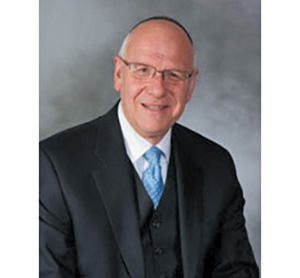
Parshat Emor
Parshat Emor, which we read this week, continues the theme of sanctity that marked last week’s parsha of Kedoshim and dedicates its first perek to the laws of kedusha as they apply to the kohanim. The haftarah, a reading selected from Sefer Yechezkel, does the same, describing the practices that would be followed by the kohanim in the future Beit Hamikdash. In fact, there is no need to search long to find the connection between the haftarah and the parsha, for the parallels are strikingly obvious. Both the parsha and the haftarah instruct the kohanim regarding how their hair should be cut; in both sources specific limitations are given to the kohanim as to whom they may marry; both readings limit the relatives for whom they may mourn; and the command for the kohanim to avoid all sources of tumah, impurity, is also included in the parsha as well as in the haftarah.
However, each time we reach Parshat Emor we are struck by the INconsistencies and seeming contradictions between the laws found in the Torah and those practices enumerated by the navi, Yechezkel. Indeed, the Talmud (Shabbat 13b) tells us that were it not for the efforts of Chananya ben Chizkiyah, the rabbis would have “hidden” Sefer Yechezkel (removed it from the canon and prohibited its study) because its words contradict those of the Torah! Unfortunately, the solutions of R. Chanaya were lost to us. Nonetheless, I believe that our ability to understand why the predictions of Yechezkel take a stricter approach to the conduct of the kohanim than that which the Torah itself commands may well be based upon our definition of “kedusha,” sanctity or holiness.
One of the best-known comments made by the Ramban (Nachmanides), the great parshan of the 13th century, is found in his definition of kedusha. In the beginning of the last parsha, the Ramban disagrees with Rashi in his understanding of how one achieves the state of sanctity. Rashi says that it requires a distancing from sin and immorality. The Ramban, however, posits that the mere circumventing of sin does not make one a “holy” person. He argues that one could actually avoid all of the sins mentioned in the Torah and yet still be a “naval b’reshut haTorah,” a degenerate who remains within the parameters set forth by the Torah. The Ramban gives the example of one who uses foul language or a glutton who spends his day gorging himself at a table. None of these acts are forbidden by the Torah—but they certainly would not be the acts of one who would be considered “holy.” Reaching the state of holiness, he says, requires a proactive approach to mitzvah fulfillment, finding opportunities to go beyond what the Torah demands.
The fact is that kedusha cannot be easily defined or described. One may find that it even changes with the time and the place, with the expected behavior of that specific generation and the mores of that specific area. But what is clear is that kedusha is attained through behavior that the people of that generation consider proper, acceptable and admirable; behavior that goes far above the kindnesses, generosity and patience people normally expect from each other. And in the time of the Third Temple, our final geula, holiness may take on higher standards than they had before then, just as Yechezkel describes.
It is with this understanding that I recall the story of the saintly Rav Shlomo Zalman Auerbach, zt”l, who was approached by a student with a question. As it was the month of Elul, the student hoped to go to Tzfat to pray at the graves of the kedoshim, the holy rabbis of the past who are buried there. The problem he had was that such a round trip would take quite a long time and he asked whether it would be permissible for him to cancel his time of Torah study in order to travel there. The rav was quoted as having said to him: “You are not permitted to lose so much time from your Torah study traveling all the way to Tzfat. But why don’t you do what I do? Why not go to Har Herzl here in Yerushalayim and pray by the graves of our holy soldiers—just as I do?”
Kedusha takes on different meanings at different times.
Yechezkel HaNavi understood this.
So did Rav Shlomo Zalman.
Do we?
By Rabbi Neil N. Winkler
Rabbi Neil Winkler is the rabbi emeritus of the Young Israel of Fort Lee and now lives in Israel.










